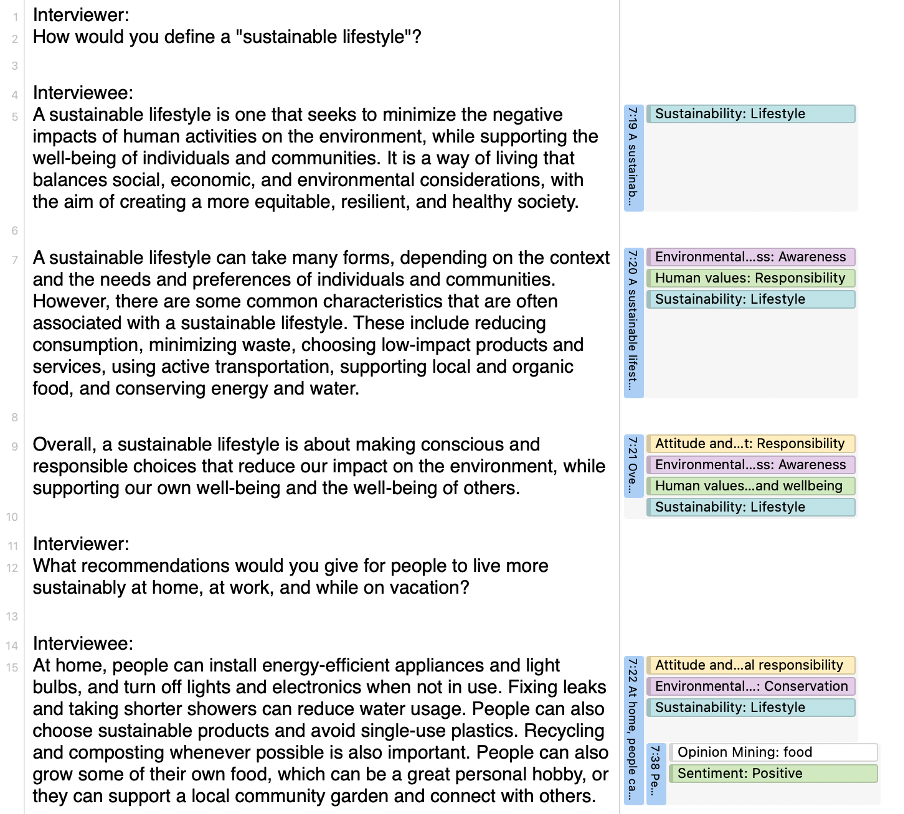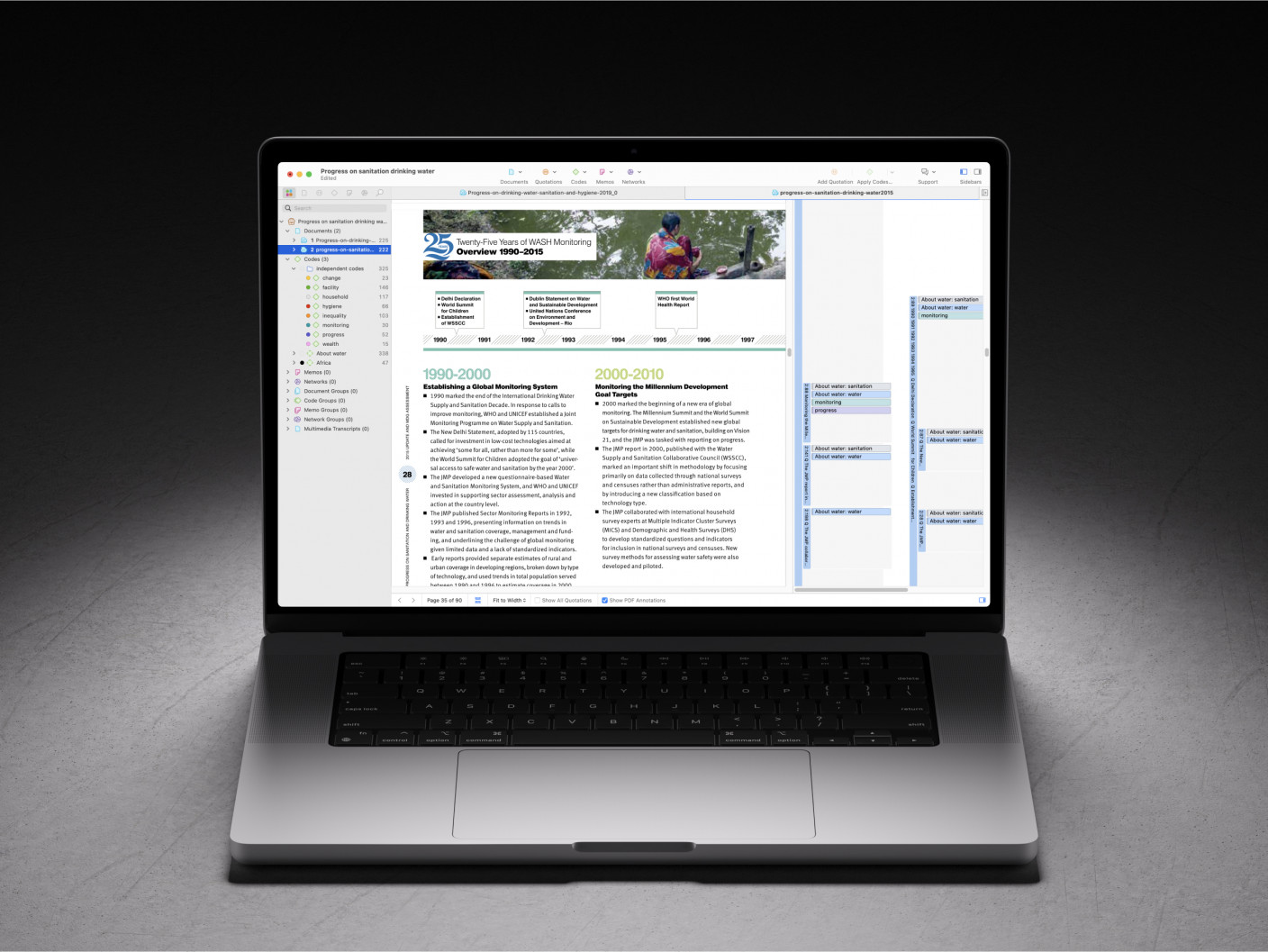- Handling qualitative data
- Transcripts
- Field notes
- Memos
- Survey data and responses
- Visual and audio data
- Data organization
- Data coding
- Coding frame
- Auto and smart coding
- Organizing codes
- Qualitative data analysis
- Content analysis
- Thematic analysis
- Narrative research
- Phenomenological research
- Discourse analysis
- Grounded theory
- Deductive reasoning
- Inductive reasoning
- Inductive vs. deductive reasoning
- Qualitative data interpretation
- Qualitative data analysis software
- How to cite "The Ultimate Guide to Qualitative Research - Part 2"
- Thematic analysis vs. content analysis
Inductive vs deductive reasoning
Inductive vs. deductive reasoning is a choice that researchers might have to make when analyzing their data. Both inductive and deductive reasoning allows researchers to come to a logical conclusion based on their data and the existing theory.
Let's look at the differences between the types of scientific reasoning and examine specific examples regarding how they are used for drawing conclusions. This will be useful in determining where your study falls in the deductive vs. inductive debate.
We'll also look briefly at abductive reasoning so you can decide if it is more useful for your research. Then we can examine how you can apply inductive reasoning and deductive reasoning to your analysis in ATLAS.ti.

Inductive reasoning
Inductive analysis looks at observing patterns to arrive at a logical conclusion. Any analytical approach called induction starts with examining a body of data, with as few preconceived notions as possible, to try to reach conclusions based on the data.
By inductively identifying patterns in the data, researchers form a premise or a statement that applies to that specific set of data. As more data from other contexts or situations are incorporated into the researcher's analysis, the researcher can form what is called a major or general premise or a broader conclusion about the patterns observed. In contrast, a more focused conclusion regarding a particular context becomes what is known as a minor or specific premise.
In the social sciences, major or general premises contribute to theories about human behavior and cultural patterns.
Inductive reasoning examples
Let's look at a basic example of how inductive arguments are formed. Imagine that you are applying the inductive method to a basketball game you are watching for the first time. Inductive reasoning would be required in this situation since you don't have the prior knowledge or experience to make any sort of general statement about basketball.

If one knows nothing about basketball or sports, one possible inductive argument is that the players wearing shirts of the same color are on the same team working together. The general premise, at least for the moment, is that uniform colors are used to distinguish one team from another. The conclusion reached in this observation forms a working theory that can be applied to similar contexts.
Other simple examples of inductive reasoning
Other examples of inductive reasoning generating conclusions include:
- All cats have four legs and whiskers.
- All cars have doors and steering wheels.
- All pizza contains cheese and tomato sauce.
As obvious from examples such as these, the conclusions reached are based on observations of cats, cars, and pizza. Still, those observations may have not included exceptions (e.g., dessert pizza) to contradict the general premises generated. Qualitative research employs inductive methods iteratively to find those exceptions and further develop more universal observations and conclusions about the world.
Deductive reasoning
Inductive reasoning looks to form a valid argument from the bottom up, while a top-down approach to looking at the world can be called deductive logic. Deductive arguments begin with applying an existing theoretical understanding of the phenomena of interest to examine it in a particular context (in the case of qualitative research) or develop a hypothesis and test it (in the case of quantitative research). Deduction starts with a first premise ("all players on the same basketball team wear the same-colored uniform") and applies it to a new context or set of data. What the researcher learns about the data is known as the second premise. Finally, the researcher compares the two premises to arrive at an inference or conclusion that either affirms the first premise or warrants the development of existing theory or creation of new theory.
The main difference between inductive and deductive reasoning is that deductive reasoning relies on existing knowledge independent of new data.
Deductive reasoning examples
Continuing the example from our discussion of inductive reasoning, imagine that you are watching another basketball game, this time in a more casual setting where players don't wear uniforms. However, one set of players is wearing shirts while the other players are not. The specific conclusions about the same color uniforms are tested here but ultimately conflict with the new data.
Among other examples of deductive reasoning, imagine another simple example where you are conducting specific observations where birds lay eggs. Using previous knowledge and experience to build your premise, you are likely to conclude that the eggs will eventually hatch birds. The inference or educated guess you make about what happens to the eggs is thus tested by the actual outcome of the eggs you are observing.
Abductive reasoning
A third type of reasoning is called abduction, which relies on making an educated guess to explain what you are observing. This educated guess can stem from previous theory or experience. For example, think about how Sherlock Holmes or other famous detectives employ abductive reasoning to rule out impossible or improbable events.
A quick example of abduction
Imagine that you see the floor is wet near your kitchen sink. You examine the sink, but you find no visible signs of any leaking pipes or faucets. You also notice that the window above the sink is open, and you know that it rained earlier in the day. Without having actually seen the rain come through the window, you can still make an educated guess that the rainwater came in through the open window and left the wet spot on the floor. In other words, you constructed a plausible explanation based on the observed evidence and your previous knowledge or experience. Your explanation can then be confirmed or refuted through additional investigation or data collection.
Even if such a conclusion is not explicitly stated in the data, abduction allows you to form the kind of argument that induction or deduction might not be able to generate by building an argument from existing theory or knowledge.
Inductive vs. deductive reasoning in research
The reasoning strategy you employ affects all stages of the research process. Qualitative research involves the researcher directly collecting data based on what they see and sense. The reasoning that you employ will influence how you analyze and make sense of your data.

For example, suppose you are conducting fieldwork with a deductive approach and are examining the effects of waterfalls on local agriculture. In that case, your research question might compel you to collect data primarily about the waterfalls in the area to guide your research toward a specific conclusion.
On the other hand, data analysis based on induction might observe a relationship between plant growth and sources of water, guiding additional data collection toward waterfalls and other sources of water. The main idea is that data collection cannot capture all possible phenomena; the reasoning employed by the researcher will determine how the phenomenon is analyzed, which can also inform subsequent data collection and theory development.
Whether your data analysis strategy follows inductive logic or deductive logic, ATLAS.ti can help you apply your reasoning to your research data through the data analysis process.
At the core of qualitative data analysis is coding, which collects segments of information together so that they are easier to understand. These codes, when organized in a hierarchy, can help you work inductively or deductively and visualize a working theory based on the data and existing knowledge.




